Shane Warne: Giant of cricket who was one of sport’s great entertainers
Incomparable artistry with the ball ensures the spin bowler’s place among the game’s elite
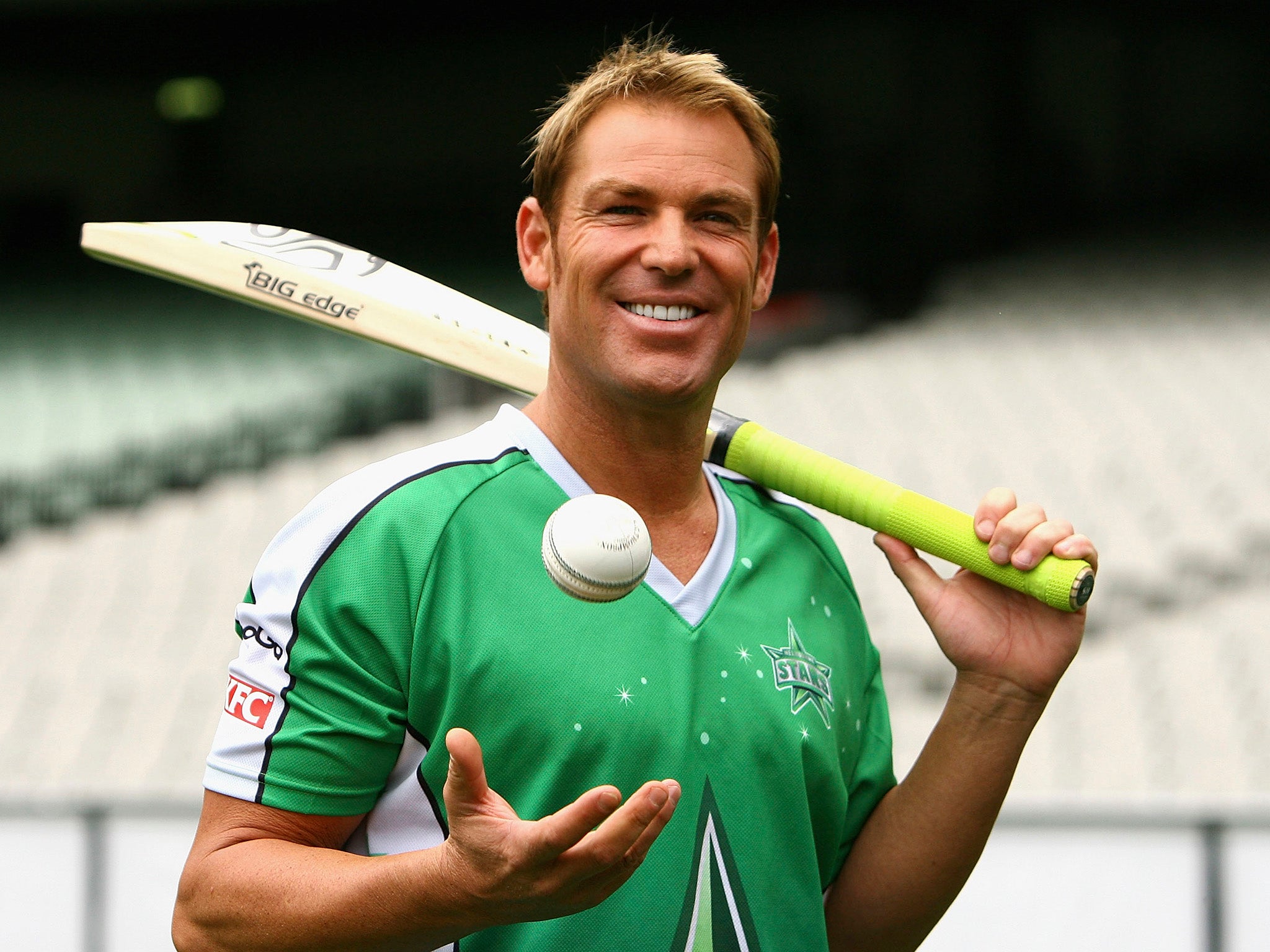
With his Baywatch persona, bleached blond locks, ear stud, shades and a permanent suntan, one eye silvery grey, the other greeny blue, Shane Warne was one of the finest cricketers of his generation. While thrilling spectators and invariably upsetting the cricketing administrators, as an entertainer as much as a sportsman, he undoubtedly helped rescue Test-match cricket from the doldrums and turn it into the multimillion-pound industry it is today. Single-handedly too, he revitalised the fast-disappearing art of leg-spin bowling, an achievement later acknowledged when Wisden named him as one of their five cricketers of the 20th century.
Few who witnessed it will surely ever forget the first ball he sent down against England at Old Trafford in the summer of 1993. Seemingly drifting down the leg side for four byes, it suddenly curled inwards towards the leg stump before eventually clipping the top off. It left batsman Mike Gatting a somewhat bemused bystander and went on to be dubbed “the ball of the century”. Surprisingly it was not Warne’s favourite.
Instead he chose the one in Sydney that spun even further to defeat the West Indies’ Shivnarine Chanderpaul. Indeed few batsmen rarely fully mastered Warne, the exception perhaps being India’s Sachin Tendulkar. Always an attacking bowler both physically and psychologically, surprisingly sparing in his use of the googly, Warne enjoyed far more success with a quicker ball that hurried on.
Born in the Melbourne suburb of Ferntree Heights, Shane Keith Warne was initially educated at Hampton High School. As a youngster he broke both his legs in an accident, being forced to push himself around in a cart that his father made for him. He would always maintain that it was this that gave him such immense upper-body strength. While his academic achievements were unremarkable he did win a sports scholarship to Mentone Grammar School. From there he joined an Australian rules football team, St Kilda Saints. After starring for St Kilda’s cricket club, in 1989 he spent the season in England with Bristol Imperials. After returning to England two years later, he played as a professional for Accrington in the Lancashire League.
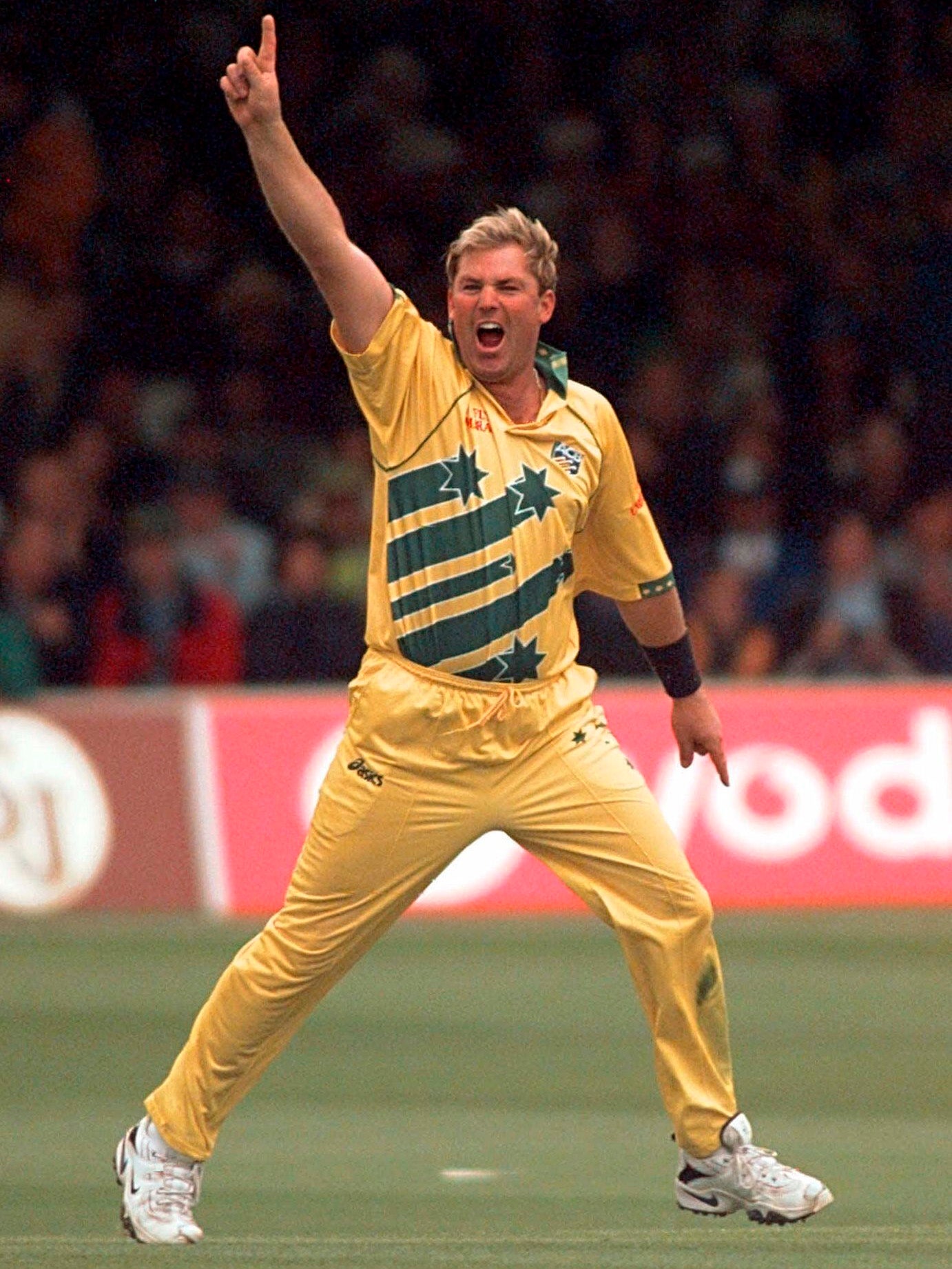
In the interim, having won a place at Australia’s national cricket academy, he moved to Adelaide. Famously described by his early mentor and coach as “a nonconformist free spirit”, at this time sport came a very poor second to his rock’n’roll lifestyle. When after nine months he dropped out to return home, very few tears were shed. Somewhat unfit and overweight he made an inauspicious debut in first-class cricket for Victoria against Western Australia in 1991.
Improvement came in December that year when he was chosen for an Australian XI against the West Indies. However against India in Sydney in January 1992, he again disappointed, taking only 1-150. Wicketless in the next encounter, as well as struggling with weight and fitness problems, he was dropped from both the Test and state sides. For all his undoubted talent, Warne’s career seemed to be heading nowhere.
A major turning point came when he played against the West Indies at the end of 1992, taking 7-52. Consolidation came the following year when he took 17 wickets in a three-match series against New Zealand. After being Man of the Series during Australia’s Ashes tour of England in 1993, he went on to become his country’s leading wicket taker in the next six successive series. By February 1998, his haul of 303 Test wickets included 84 against England.
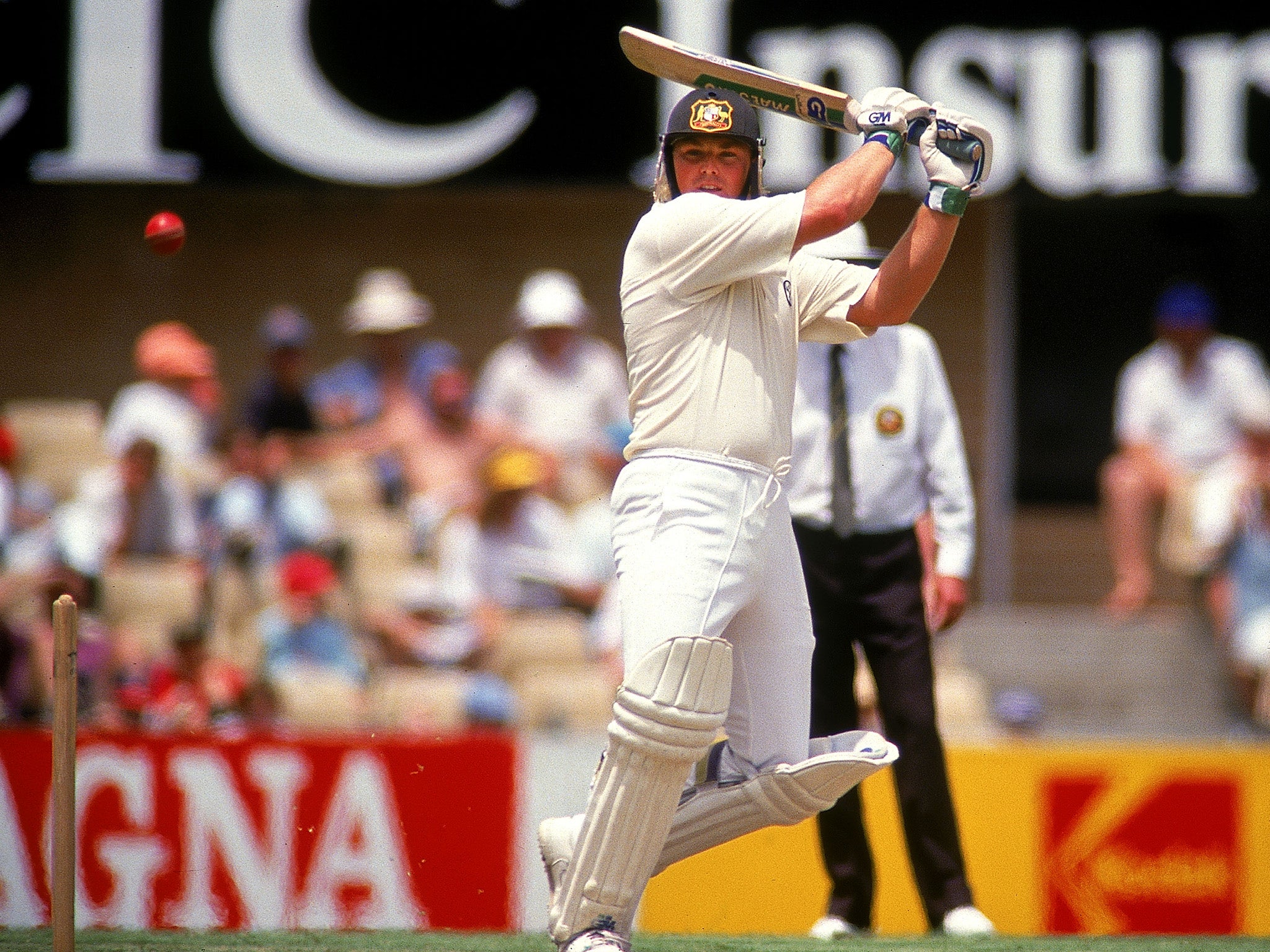
However, he began to be troubled both by finger and shoulder issues. Despite all this, against South Africa in 1997-8, his 20 wickets brought him yet another Man of the Series award. His increasing physical frailty finally caught up with him during the 1998 tour of the Indian subcontinent when, in particular, Tendulkar took delight in putting him to the sword.
Later that December came news that four years earlier during the tour of Sri Lanka, Warne had accepted $5,000 from a mysterious Indian bookmaker in return for details of team selection as well information about the pitch. Fined thousands by the Australian Board, he also found the press, public and sponsors against him.
In addition to his poor form during the early stages of the 1999 World Cup, further lurid headlines did little to improve his image. However, with his side in deep trouble against South Africa in the semi-final, Warne roared back with a vengeance, taking the wickets of Gibbs, Kirsten, Cronje and Kallis to propel his side into the final. Claiming the trophy with a comfortable win over Pakistan, Warne was voted Man of the Match.
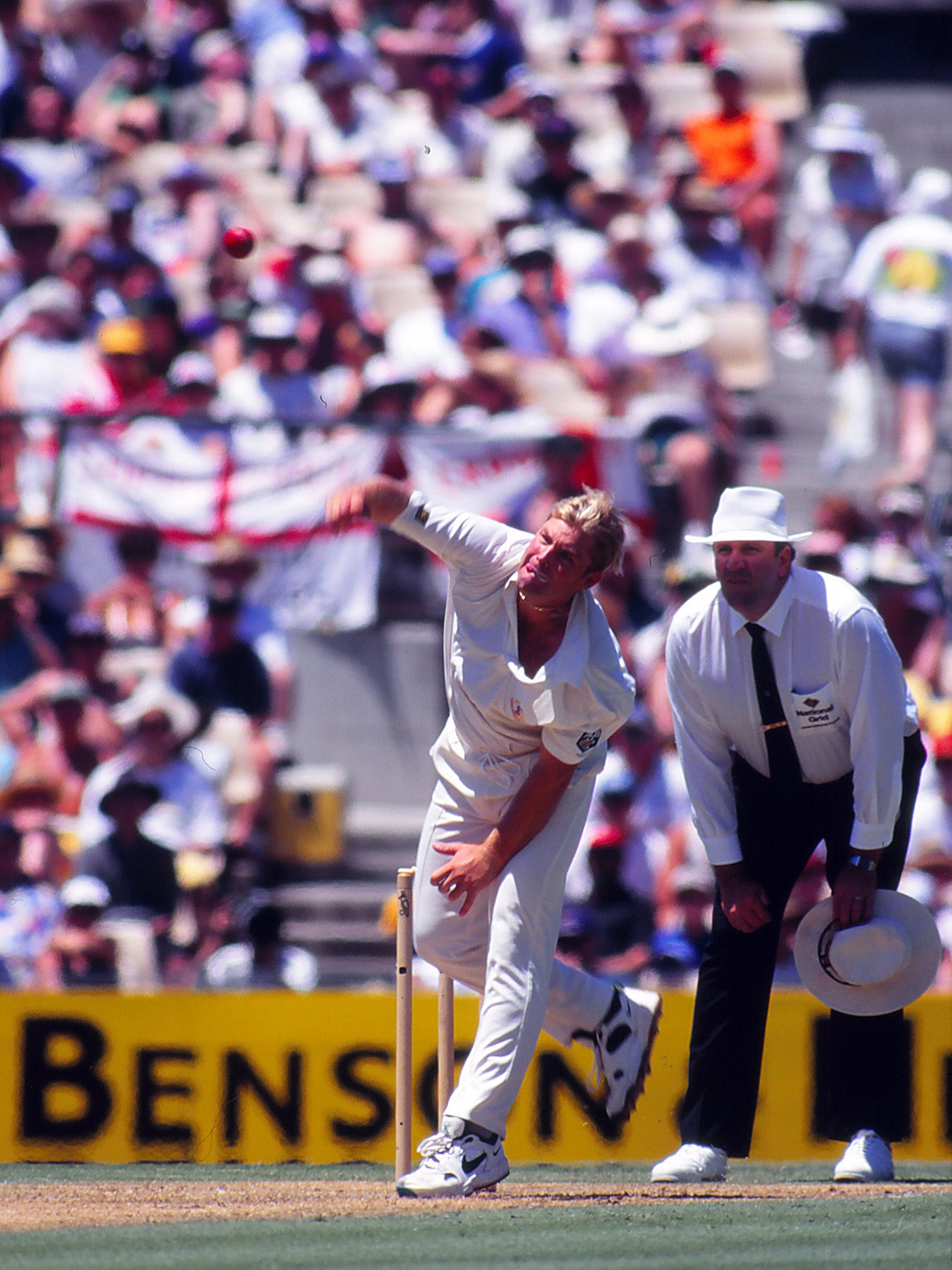
Twelve months later, having overtaken Dennis Lillee’s record of 355 wickets, he was dropped as Australian vice-captain following yet another sex scandal when lewd telephone conversations were leaked to the press. During the 2001 Ashes series in England, he claimed 31 victims. After struggling once again against the Indians, in contrast the matches against South Africa 2001-2 brought him a further 37 wickets.
His rich vein of form continued during the 2002 contests against Pakistan. Soon afterwards, before dislocating his shoulder, his input helped his country comfortably retain the Ashes. Then in February 2003, on the eve of the World Cup, Warne was informed that he had failed a drugs test for an illegal diuretic. Blaming his mother’s slimming pills he was given a 12-month ban.
Bouncing back in 2004, Warne took 26 wickets in the three Test series against Sri Lanka before proceeding to surpass Courtney Walsh’s total of 519 test wickets. He returned to England 12 months later for what proved to be a hugely compelling Ashes series. While the home side emerged victorious, Warne topped the visitors’ bowling averages. At Edgbaston, he rekindled memories of his dismissal of Mike Gatting. Cleverly bowling into the rough, he produced yet another outstanding delivery to see off opener Andrew Strauss.
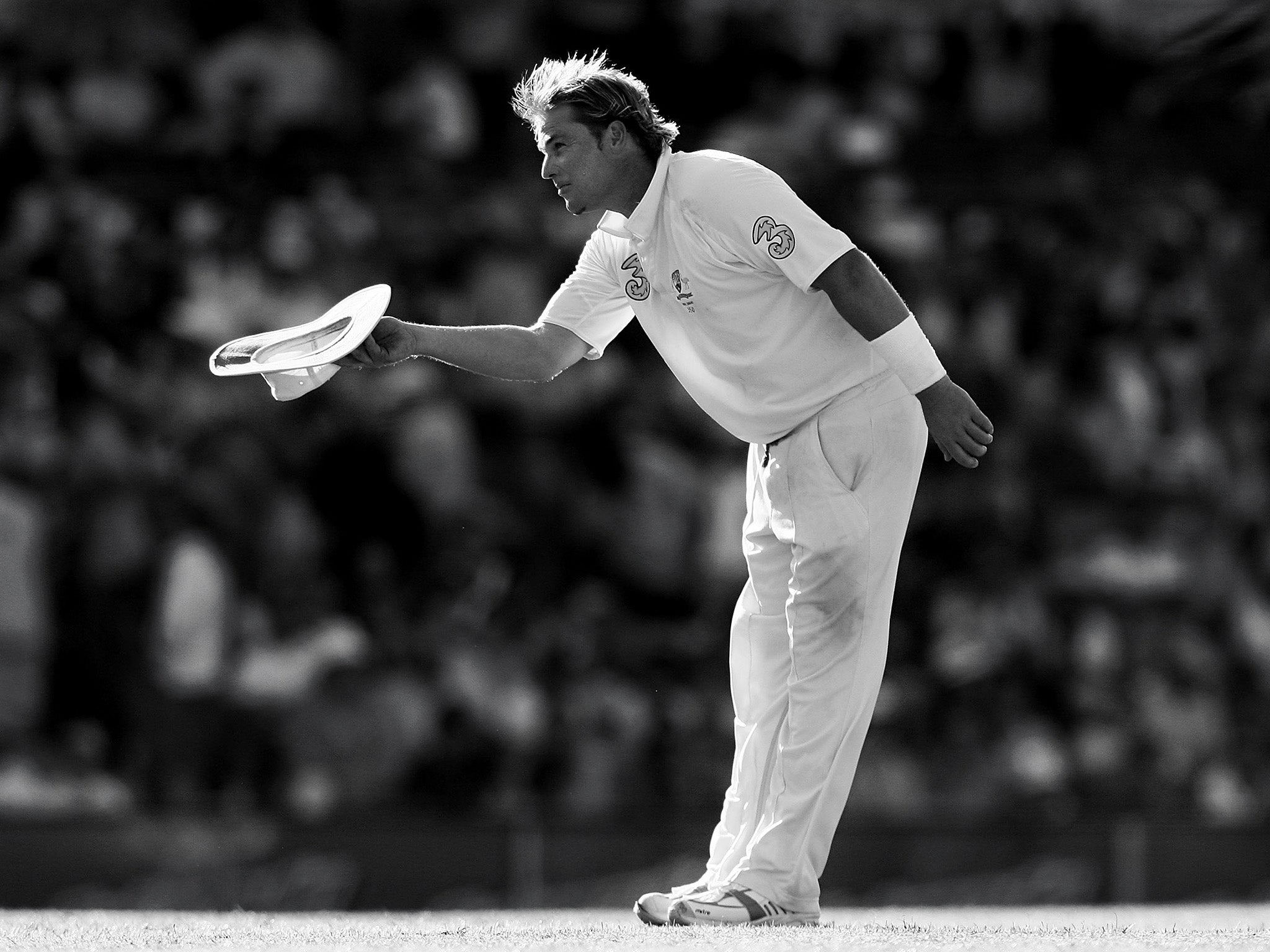
Continuing in the same vein at Old Trafford, there he became the first to take 600 test wickets. Then, after losing a closely fought series, revenge came in 2006-7 back in Australia. Once his team had regained the famous urn, Warne announced his retirement, but not before Strauss became his 700th Test wicket on his home turf in Melbourne.
In common with so many bowlers, Warne liked to bat, but unlike so many, he was more than useful. He scored more runs in Test cricket without ever completing a century than any other player in history. Against New Zealand, however, he came tantalisingly close, reaching 99 before being snaffled by Daniel Vettori. A fine close catcher, he has 125 Test victims to his name. However, it is his incomparable artistry with the ball that ensures his place among the game’s elite.
In all first-class cricket between 1991 and 2007 he made 301 appearances, scoring 6,919 runs and taking 1,319 wickets. Unusually for a leg spinner, he proved a particular asset in the one-day game, appearing in 193 internationals and taking 291 wickets. He led the Rajasthan Royals to victory in the inaugural Indian Premier League in 2008. In 2011-12, he made 15 appearances for Melbourne Stars in the Twenty 20 Big Bash.
With life beyond cricket proving richer than for many, while competing in poker tournaments he worked as a television sports commentator and analyst, also coaching London Spirit in The Hundred. After being voted BBC Overseas Sports Personality of the Year in 2005, The Shane Warne Foundation helped support sick and underprivileged children. From 2011 until 2013 he was engaged to actress Liz Hurley. Last year, in addition to twice catching Covid, he was badly injured in a motorcycle accident. The subject of a stage musical and some 14 books, with the input of former sporting colleagues and numerous showbusiness celebrities, a feature-length glossy biopic of his life and career was recently released.
Marrying Simone Callahan in 2005, the couple divorced 10 years later. He is survived by his three children.
Shane Warne, cricketer, born 13 September 1969, died 4 March 2022


Bookmark popover
Removed from bookmarks